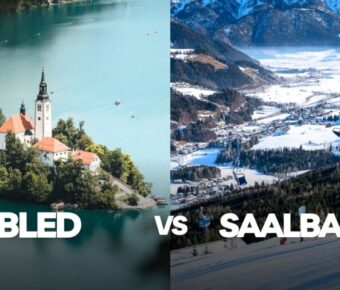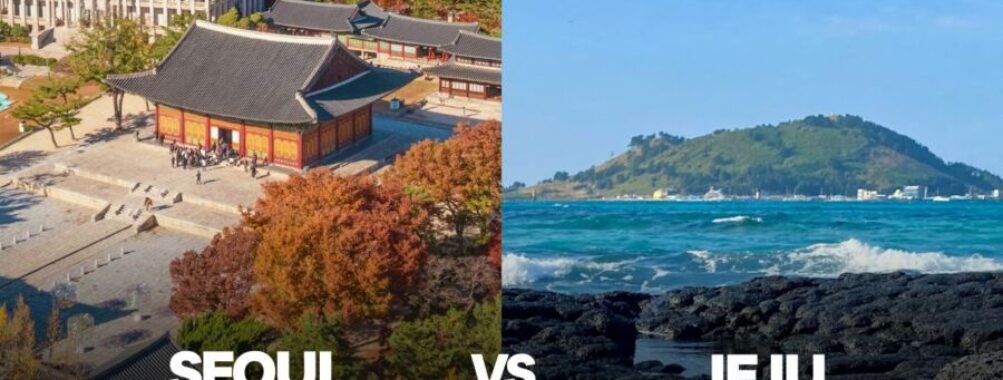
Seoul vs Jeju: 7 Essential Differences to Know Before Your 2025 Korean Adventure
When planning a trip to South Korea, many travelers are torn between two incredible destinations: Seoul and Jeju Island. These places offer completely different experiences.
Seoul is a bustling metropolis with a perfect blend of ancient traditions and futuristic innovation, while Jeju Island offers natural wonders with its stunning beaches, volcanic landscapes, and relaxed atmosphere. The capital city draws those who crave urban adventures, shopping districts, and historical palaces, whereas Jeju attracts nature lovers seeking hiking trails, waterfalls, and coastal views.
Your travel style will largely determine which destination suits you better. Seoul provides the convenience of excellent public transportation and countless entertainment options.
Though it requires more planning to get around, Jeju rewards visitors with breathtaking scenery and a slower pace that helps them disconnect from everyday stress. Many travelers try to include both in their South Korean itinerary for a well-rounded experience.
Contents
- Overview of Seoul and Jeju
- Seoul: The Capital City
- Jeju: The Island of Nature
- Comparing Climate and Geography
- Cultural Highlights
- Historical Sites in Seoul
- Jeju’s Natural Wonders
- Culinary Experiences
- Accommodations and Travel Tips
- Staying in Seoul
- Jeju’s Unique Lodgings
- Transportation Insights
- Outdoor Activities and Itineraries
- Urban Exploration in Seoul
- Hiking and Beaches in Jeju
- Sports and Entertainment
- Soccer Culture in Seoul
- Jeju United: Island’s Pride
- Local Sports Events
- Betting and Predictions
- Odds and Betting Culture
- Soccer Betting Tips
- Traveler Insights and Stories
- Experiences in Seoul
- Adventures in Jeju
- Frequently Asked Questions
- What are the unique attractions that differentiate Jeju from Seoul?
- How do the culinary experiences in Seoul and Jeju compare?
- Can you highlight the contrast in cultural experiences between Seoul and Jeju?
- What are the differences in climate and natural landscapes between Jeju and Seoul throughout the year?
- In terms of transportation, what are the options for traveling between Seoul and Jeju?
- What are some insider tips for choosing between a visit to Seoul or Jeju based on travel preferences?
- More Travel Guides
Overview of Seoul and Jeju
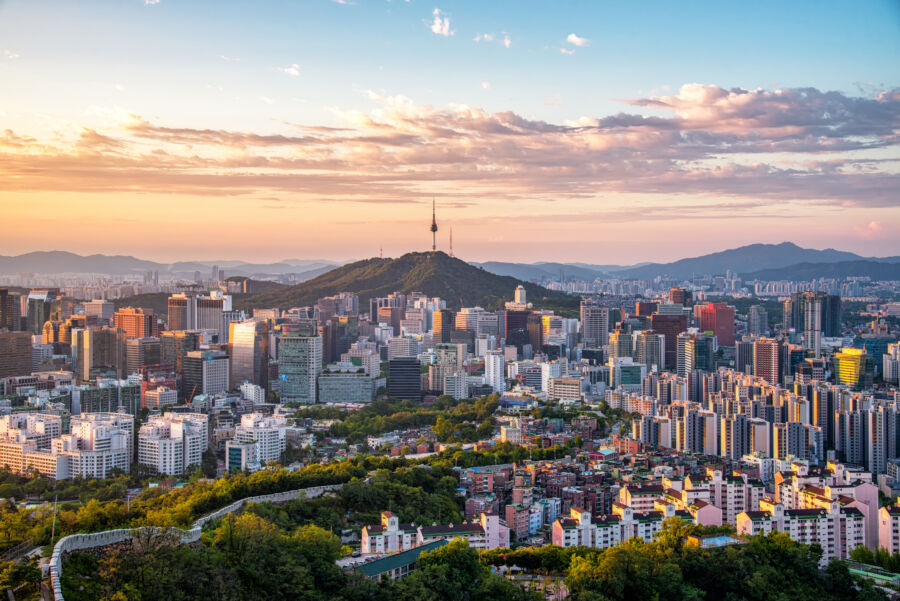
South Korea offers two distinctly different experiences through its capital city, Seoul, and the island paradise of Jeju. These locations represent contrasting aspects of Korean culture—urban sophistication and natural beauty—each with unique attractions, geography, and atmosphere.
Seoul: The Capital City
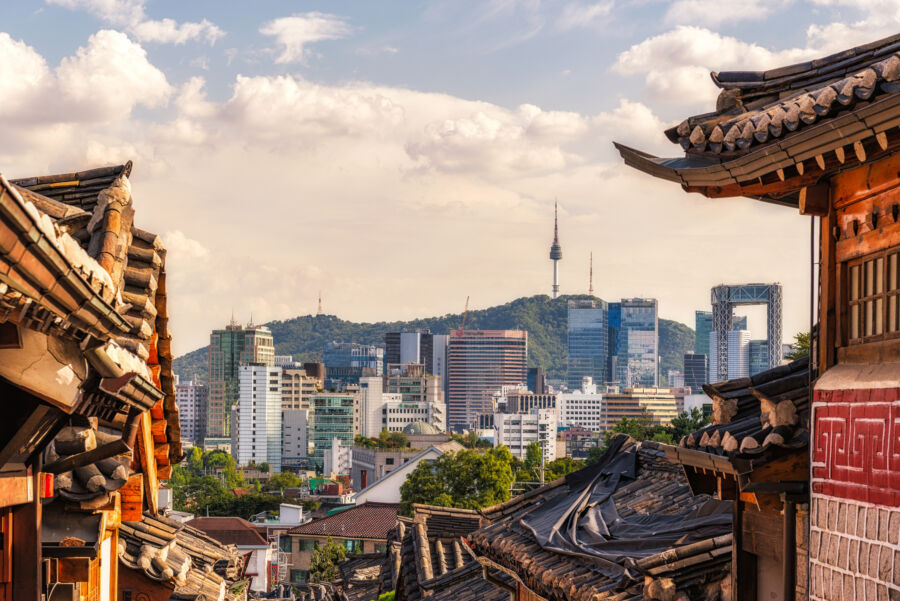
Seoul is South Korea’s bustling metropolis and political heart. Over 10 million people call it home. The city blends ultra-modern technology with traditional culture in a vibrant urban landscape.
The city features magnificent palaces like Gyeongbokgung and Changdeokgung that showcase Korea’s royal history. These structures survived the Korean War and stand as symbols of resilience among gleaming skyscrapers.
Shopping districts like Myeongdong and Dongdaemun attract millions with their round-the-clock retail experiences. Tech enthusiasts find heaven in Gangnam, which was made famous by Psy’s hit song but is known locally for cutting-edge innovation and fashionable cafes.
Seoul’s proximity to the Demilitarized Zone (DMZ) gives visitors a sobering look at the ongoing division with North Korea. Many tourists take day trips to this heavily fortified border, a stark reminder of the Korean War’s legacy.
Jeju: The Island of Nature

Jeju Island sits off South Korea’s southern coast and offers a peaceful escape from mainland hustle. This volcanic island is known for its stunning natural landscapes and unique cultural practices.
Hallasan, South Korea’s highest mountain, dominates the island’s center. Hiking trails lead adventurers through lush forests to dramatic crater views. The island’s black sand beaches and crystal waters make it a favorite for summer visitors.
Jeju boasts impressive lava tubes and unique geological formations like Seongsan Ilchulbong (Sunrise Peak). These UNESCO World Heritage sites showcase the island’s fascinating volcanic origins.
The island maintains distinct traditions, including the famous haenyeo—female free divers who harvest seafood without modern equipment. This matriarchal tradition represents Jeju’s independent spirit and connection to the sea.
Comparing Climate and Geography
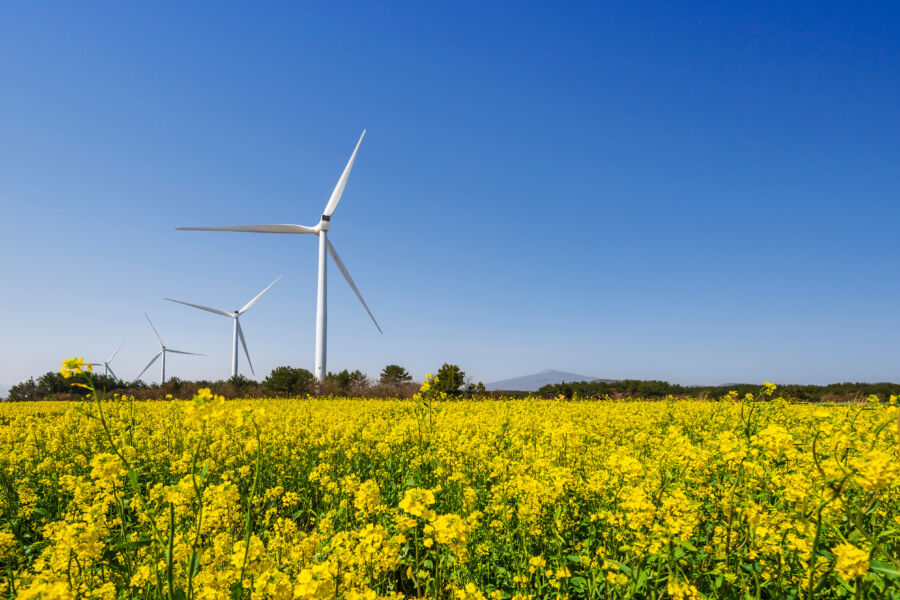
Seoul experiences four distinct seasons with dramatic temperature swings. Summers are hot and humid with a rainy monsoon season, while winters bring freezing temperatures and occasional snow. The city sits in a basin surrounded by mountains, with the Han River flowing through its center.
Thanks to its southern location and ocean surroundings, Jeju enjoys a milder climate. Winters rarely see snow except on Hallasan, and summers feel tropical but slightly less humid than Seoul. The island’s volcanic soil supports unique vegetation not found on mainland Korea.
Both locations face seasonal challenges. Seoul deals with “yellow dust” pollution blowing from China in spring, while Jeju can experience powerful typhoons during late summer and early fall. These weather patterns influence the best times to visit each destination.
Cultural Highlights

Seoul and Jeju offer very different cultural experiences for travelers. Seoul showcases Korea’s rich history with traditional architecture and museums, while Jeju presents unique natural landscapes and distinctive local traditions that set it apart from mainland culture.
Historical Sites in Seoul

Seoul is a treasure trove of historical landmarks that tell the story of Korea’s past. Bukchon Hanok Village stands out as one of the best-preserved traditional neighborhoods, where visitors can wander among hundreds of hanbok (traditional Korean houses) dating back to the Joseon Dynasty. These beautiful wooden structures, with their distinctive curved roofs, offer a glimpse into historical Korean architecture.
The city’s palaces, Gyeongbokgung and Changdeokgung, showcase the grandeur of royal Korean culture. Visitors can watch the colorful changing of the royal guard ceremony or explore the Secret Garden, a UNESCO World Heritage site.
Seoul’s museums provide a deeper cultural context. The National Museum of Korea houses over 220,000 artifacts, while smaller specialized museums focus on Korean folk traditions, modern art, and the country’s technological achievements.
Jeju’s Natural Wonders

Jeju Island’s cultural identity is deeply connected to its volcanic landscape and island heritage. The UNESCO-recognized lava tubes and Hallasan Mountain reflect the island’s unique geological history that shaped local traditions and beliefs.
One of Jeju’s most fascinating cultural icons is the haenyeo, female free divers who harvest seafood without using oxygen tanks. These remarkable women, many now in their 60s and 70s, represent a matriarchal tradition unique to Jeju. At the Haenyeo Museum, visitors can observe their diving demonstrations and learn about their important cultural heritage.
Jeju’s distinct dialect differs significantly from mainland Korean, reflecting the island’s historical isolation. The island also preserves shamanistic traditions and folk beliefs that have faded in other parts of Korea, as seen in its stone grandfather statues (dolharubang) and village shrines.
Culinary Experiences
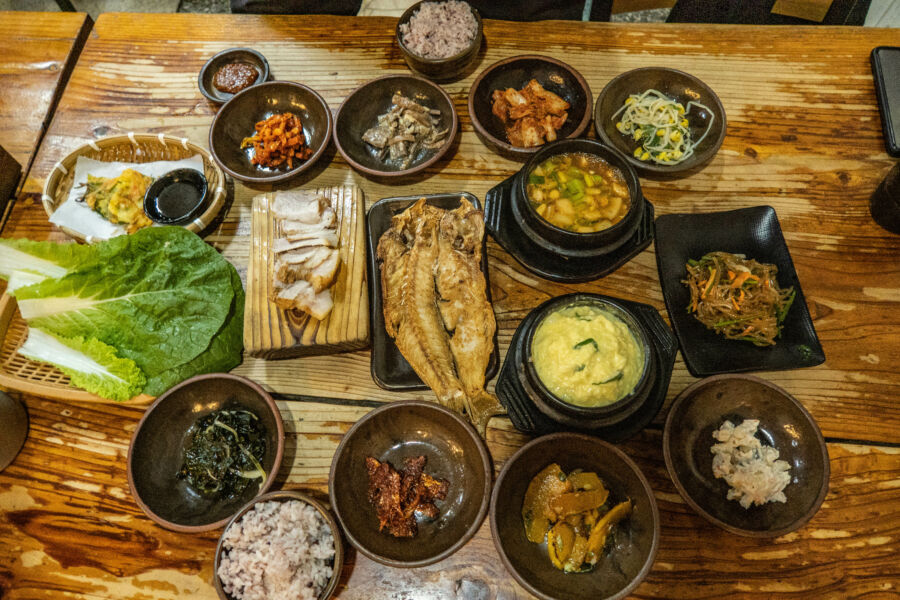
Food lovers will find distinctive culinary traditions in both destinations. Seoul’s vibrant food scene ranges from royal court cuisine to street food markets like Gwangjang and Namdaemun. Visitors can sample classics like bibimbap and Korean barbecue at restaurants ranging from humble neighborhood spots to Michelin-starred establishments.
Temple food, focusing on vegetarian ingredients from Buddhist monks, offers a glimpse into Korea’s spiritual traditions. Many Seoul restaurants now showcase these ancient cooking techniques with modern presentation.
Jeju’s island cuisine features fresh seafood harvested by haenyeo divers and unique ingredients like black pork from native island pigs. The tangerine groves that dot the island produce fruit that appears in many local dishes and drinks.
Both locations offer food tours, where visitors can learn cooking techniques firsthand. These hands-on cultural experiences help travelers understand Korean culture through its flavors and food traditions.
See Related: Seoul vs Singapore: Key Differences for Smart Travelers
Accommodations and Travel Tips

Finding the right place to stay and knowing how to get around can make or break your Korean adventure. Seoul and Jeju offer distinct accommodation styles and transportation options catering to travel preferences.
Staying in Seoul
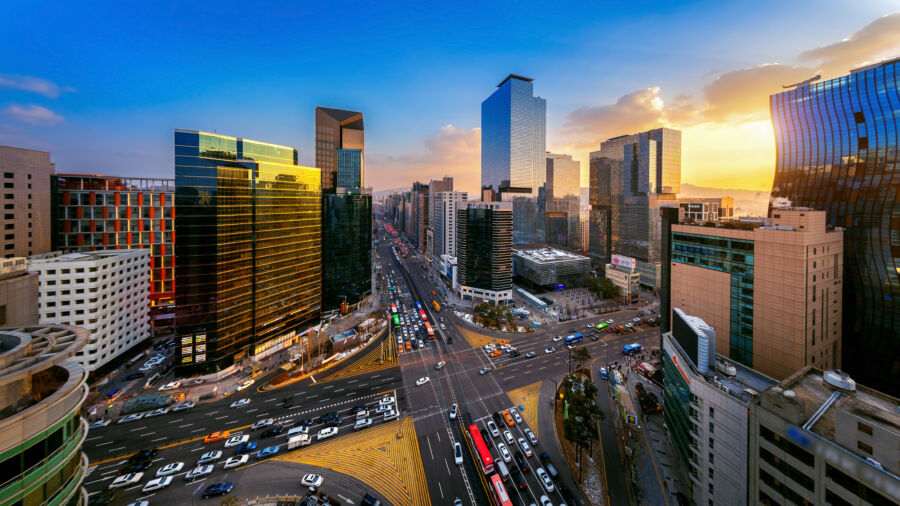
Seoul’s accommodation scene is incredibly diverse, ranging from luxury high-rises to budget-friendly guesthouses. Most first-time visitors prefer staying in popular districts like Myeongdong, Hongdae, or Gangnam.
Myeongdong puts you in the heart of shopping and street food, with easy metro access to major attractions. Hotels here typically range from $70-200 per night, depending on the season.
Hongdae offers a younger vibe with its university atmosphere and nightlife. Budget travelers should check out the many guesthouses that offer rooms from $30-60 per night.
Business travelers often prefer Gangnam’s upscale accommodations. The area boasts excellent public transport connections and proximity to business districts.
Pro tip: Book accommodations near metro stations to save time navigating the city. Many Seoul hotels also offer free airport shuttle services if you book directly.
Jeju’s Unique Lodgings
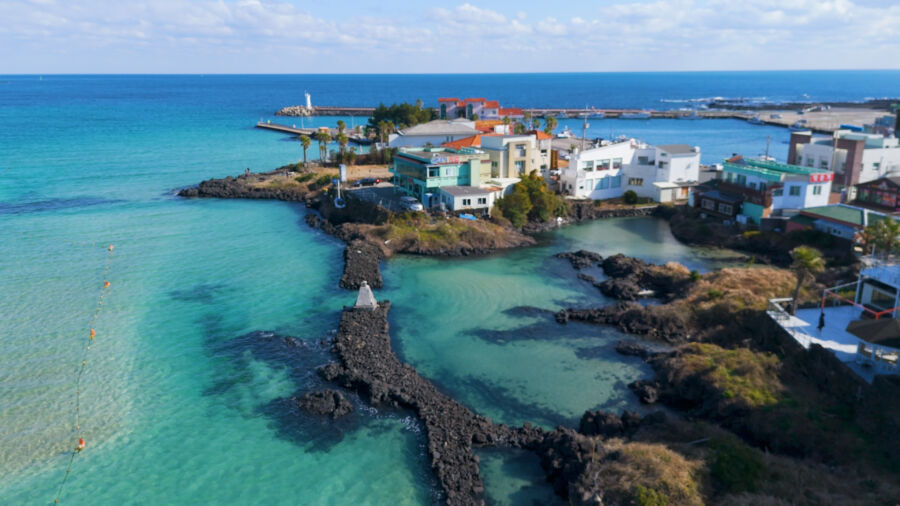
Jeju accommodations are different from those in mainland Korea. The island features luxury beach resorts and charming pension houses (Korean-style vacation rentals).
Beachfront resorts line the northern and eastern coasts, offering stunning ocean views. Depending on the season, these typically run $100-300 per night. Prices increase by 30-50% during peak summer months.
For a more authentic experience, try a pension house. These family-run establishments often include kitchenettes and outdoor BBQ facilities. Prices range from $50 to $150 per night.
Jeju’s growing popularity has also led to unique accommodation options, such as glamping sites near Hallasan Mountain and converted traditional stone houses (dolhareubang homestays) in rural villages.
Car rental is almost essential for Jeju lodging since many charming places are located away from public transportation routes. If possible, book accommodations with free parking.
Transportation Insights

Seoul’s public transportation system ranks among the world’s best. The extensive metro network covers virtually every city corner, with signs in multiple languages, including English.
A T-money card is essential for easy travel. This reloadable card works on buses, subways, and even taxis. The basic subway fare is about 1,350 won (roughly $1).
Taxis in Seoul are plentiful and relatively affordable. The base fare is around 3,800 won, with most cross-city trips costing under $15.
Jeju requires different transportation planning. While there are public buses, service can be infrequent in rural areas. Most travelers rent cars, which cost approximately $40-70 daily.
For those who are uncomfortable driving internationally, Jeju offers taxi tour packages. These full-day excursions with English-speaking drivers typically cost $100-150 but provide a hassle-free exploration of the island’s highlights.
Outdoor Activities and Itineraries
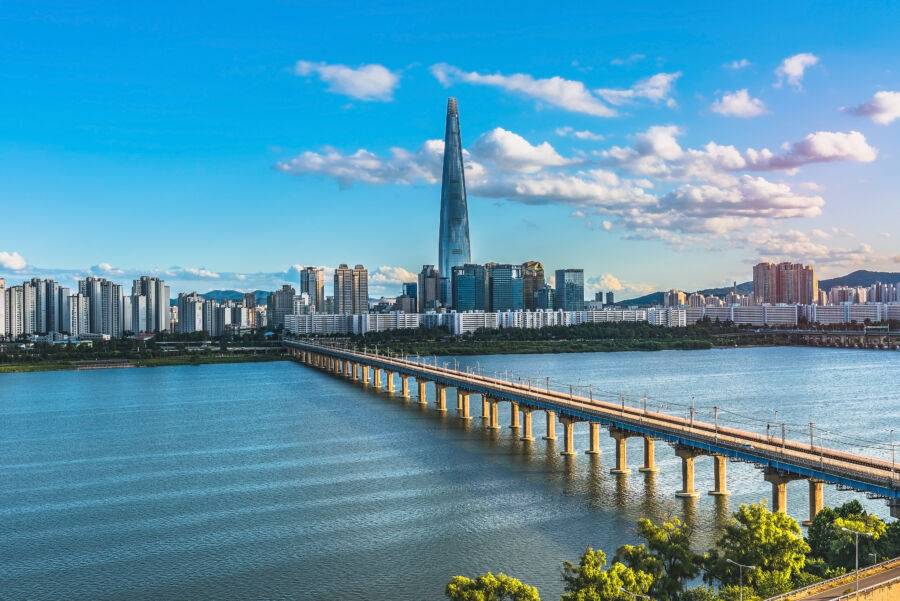
South Korea offers diverse outdoor experiences that cater to different interests. From urban adventures in Seoul to natural wonders on Jeju Island, travelers can enjoy various activities regardless of their preference for city life or nature exploration.
Urban Exploration in Seoul
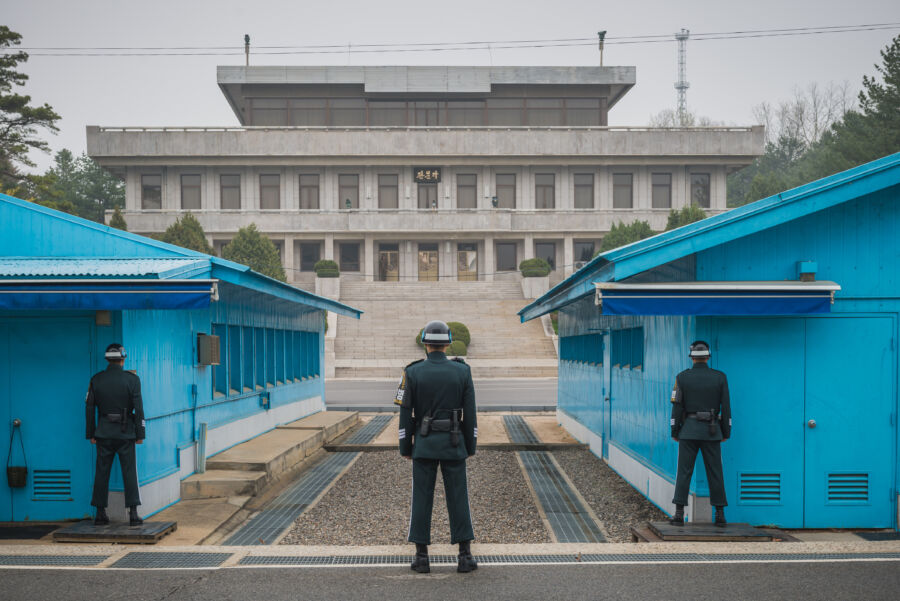
Seoul blends modern architecture with historical sites, making urban exploration exciting. Hiking enthusiasts can enjoy Seoul’s many mountains without leaving the city. Bukhansan National Park offers trails for all skill levels with stunning city views from its peaks.
The Han River provides a refreshing escape with bike paths stretching over 40km. You can rent bikes and explore at your own pace or join organized cycling tours. Many locals enjoy picnics along the riverbanks during warm months.
For a unique experience, consider a DMZ tour from Seoul. These day trips take you to the border between North and South Korea. You’ll learn about Korean history while seeing observation points and infiltration tunnels.
Seoul’s numerous parks, like Olympic Park and Yeouido Park, host seasonal festivals. Cherry blossom viewing in spring and vibrant fall colors make these urban green spaces worth visiting year-round.
Hiking and Beaches in Jeju
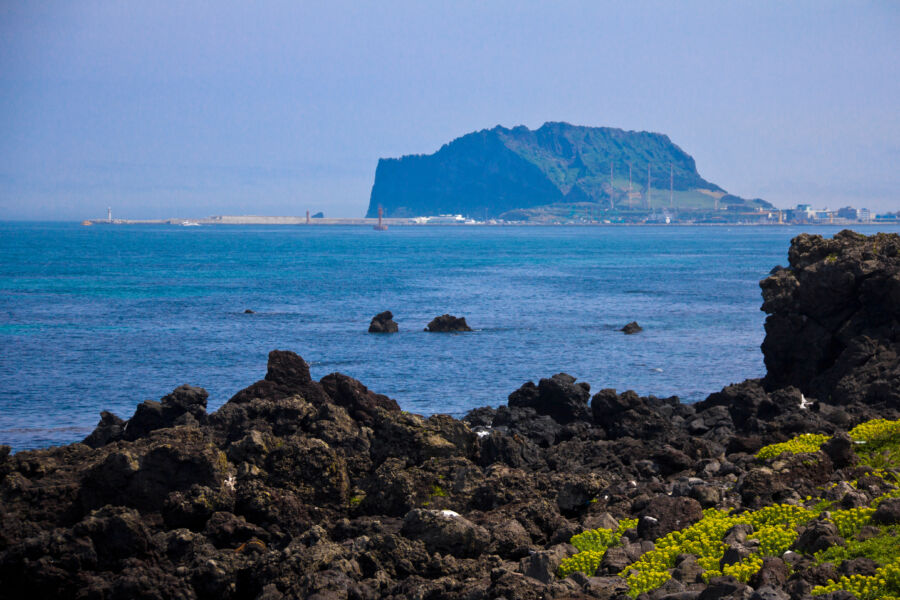
Jeju Island is a paradise for nature lovers with its volcanic landscapes and coastal views. Hallasan Mountain, Korea’s highest peak, offers several hiking trails of varying difficulty. The mountain’s crater lake is especially beautiful when surrounded by wildflowers in spring.
Seongsan Ilchulbong, or Sunrise Peak, is a must-visit volcanic crater. The moderately challenging 30-minute hike rewards you with breathtaking panoramic views. Try to visit at sunrise for the most magical experience.
Jeju’s beaches are perfect for relaxation after hiking adventures. Hyeopjae and Hamdeok beaches feature crystal-clear turquoise waters and white sand. Water activities like snorkeling, surfing, and paddleboarding are popular in summer.
The island’s unique lava tubes and caves provide fascinating geological explorations. Manjanggul Cave, one of the world’s longest lava tubes, maintains a cool temperature year-round, making it a perfect activity for hot summer days.
Sports and Entertainment
Seoul and Jeju offer vastly different sports and entertainment experiences. Seoul boasts professional teams and massive stadiums, while Jeju features unique outdoor activities and a dedicated island team with passionate local support.
Soccer Culture in Seoul
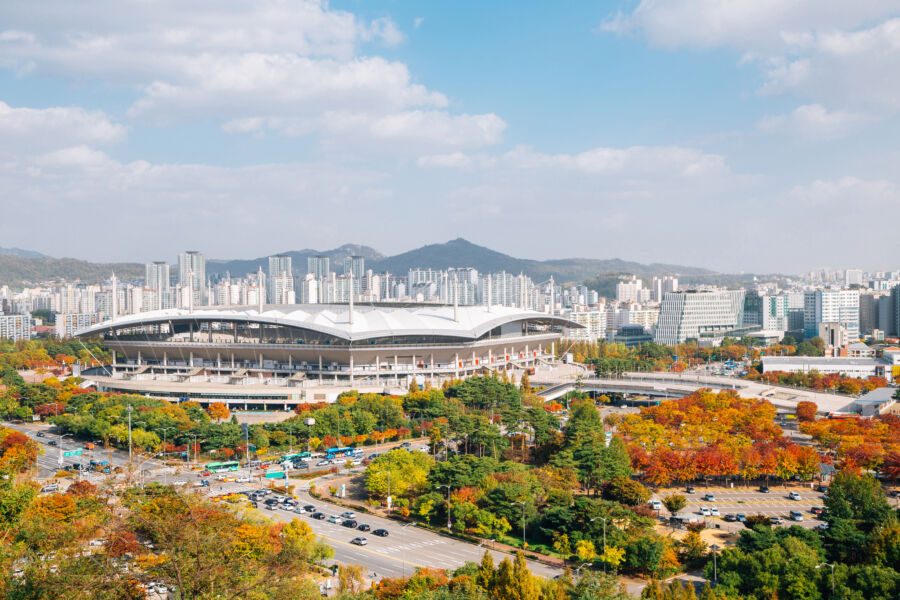
FC Seoul is the capital’s premier soccer club, playing in the K League at the impressive Seoul World Cup Stadium. With a capacity of over 66,000 fans, the stadium creates an electric atmosphere during home games. The team has a strong following and has won multiple K League titles and Korean FA Cup championships.
Soccer is deeply woven into Seoul’s urban culture. During major matches, you’ll find pickup games in local parks and passionate viewing parties at bars throughout the city.
Jeju United: Island’s Pride

Jeju United FC represents the island’s soccer passion, competing in the K League at the Jeju World Cup Stadium. The team plays in distinctive orange kits, reflecting the island’s famous citrus fruits. Despite being from a smaller market, Jeju United has developed a reputation for nurturing young talent.
The club’s passionate fan base creates a unique island atmosphere during home matches. Many locals consider the team an important symbol of Jeju’s identity and regional pride.
In recent years, Jeju United has experienced relegation and promotion, making its journey more emotional for dedicated supporters. The team has also participated in Asian competitions, bringing international attention to the island.
Local Sports Events
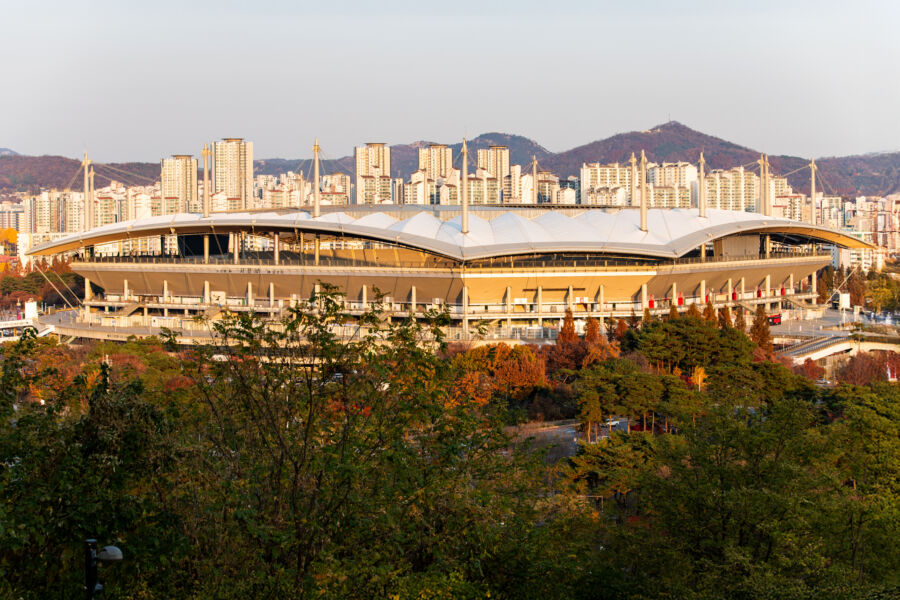
Beyond soccer, Jeju hosts unique sporting events tied to its natural environment. The island’s famous Hallasan Mountain is the backdrop for trail running competitions and hiking challenges that attract participants across Korea.
Seoul’s diverse sporting scene includes professional baseball, with the Doosan Bears and LG Twins sharing Jamsil Baseball Stadium. The city also hosted the 1988 Summer Olympics, leaving a legacy of world-class facilities for various sports.
Water sports thrive in Jeju, with surfing competitions along the island’s beaches becoming increasingly popular. Traditional Korean sports like ssireum (Korean wrestling) maintain a stronger presence in Jeju than in Seoul, with regular local tournaments.
Both locations host marathon events, though Jeju’s coastal route offers more scenic views than Seoul’s urban course through historic districts and modern landmarks.
See Related: Seoul vs Taipei: Key Differences to Know Before Your Asian Adventure
Betting and Predictions
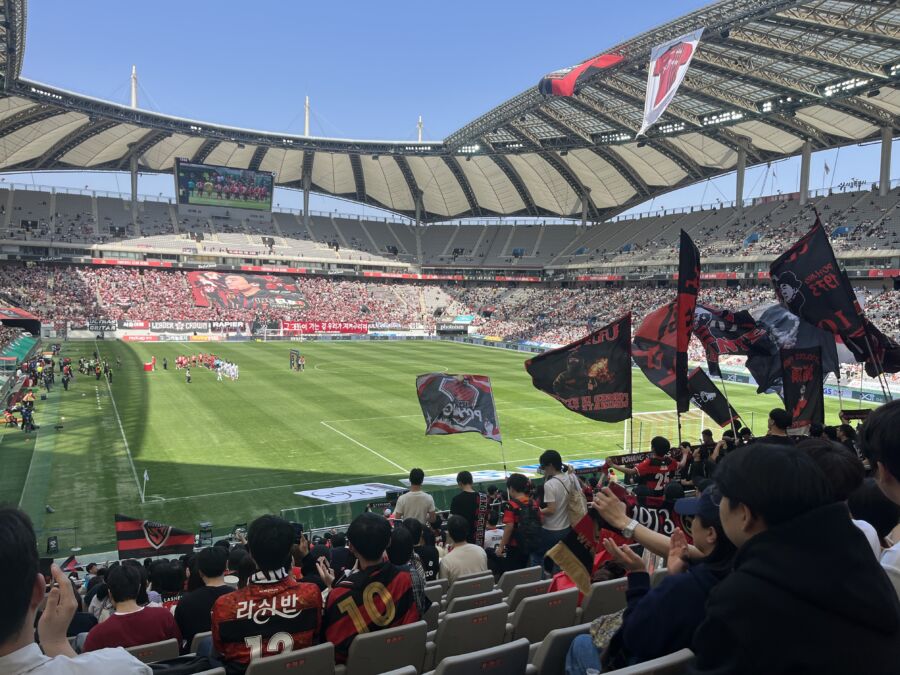
Soccer matches between FC Seoul and Jeju United attract significant betting interest, with bookmakers typically favoring FC Seoul. Betting odds reflect team performance and historical head-to-head statistics, giving bettors various options.
Odds and Betting Culture
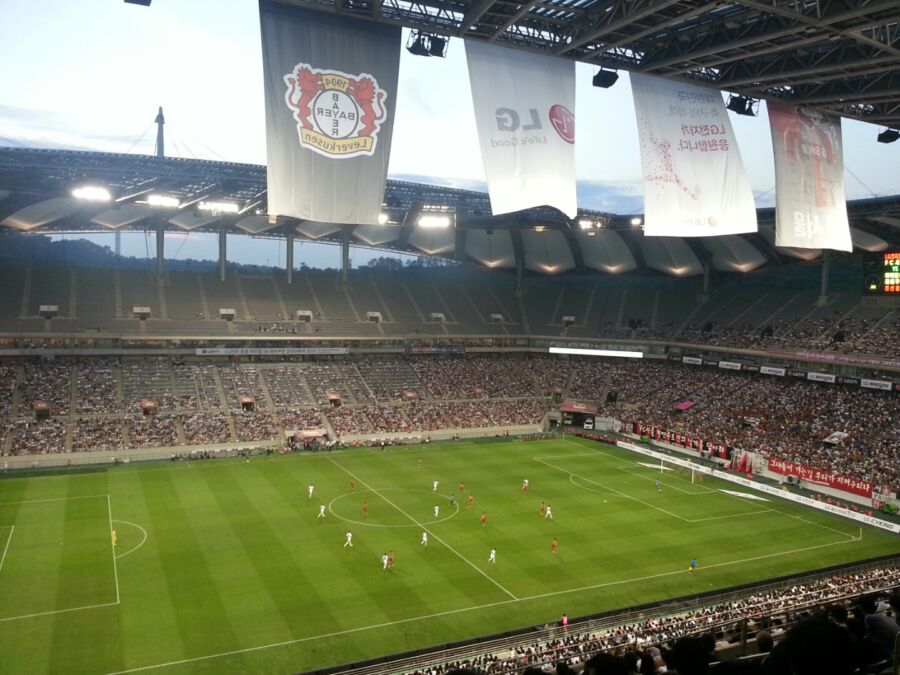
According to recent information, FC Seoul is favored to win their upcoming match against Jeju United with odds around -120 (or 1.83 in decimal odds). This implies bookmakers give FC Seoul approximately a 55% chance of victory. In contrast, Jeju United has been given about a 32% probability of winning.
Betting on K-League 1 matches has grown in popularity in recent years. Many fans enjoy wagering on match outcomes, goal totals, and various prop bets that add excitement to the viewing experience.
Head-to-head statistics play a crucial role in how odds are set. Bookmakers analyze previous match results, current form, and team standings before establishing their lines. Smart bettors often look beyond simple win/loss records to find value.
Soccer Betting Tips

For the upcoming Seoul vs Jeju match, several betting experts are predicting a close contest. Some tipsters suggest a 1-0 victory for FC Seoul, highlighting the competitive nature expected in this fixture.
When placing bets on this matchup, consider these tips:
- Study recent form: Both teams’ performances in their last 5-6 matches can reveal trends
- Check injury reports: Missing key players significantly impacts outcomes
- Consider the Over/Under market: Historically, have these been high- or low-scoring affairs?
- Home/away performance: Jeju may perform differently at home than away
The Over/Under betting market offers alternatives to picking outright winners. Given the competitive nature of these teams, betting on total goals might provide better value than picking a match-winner.
Weather conditions and pitch quality at Jeju World Cup Stadium can influence match outcomes and betting strategies.
Traveler Insights and Stories
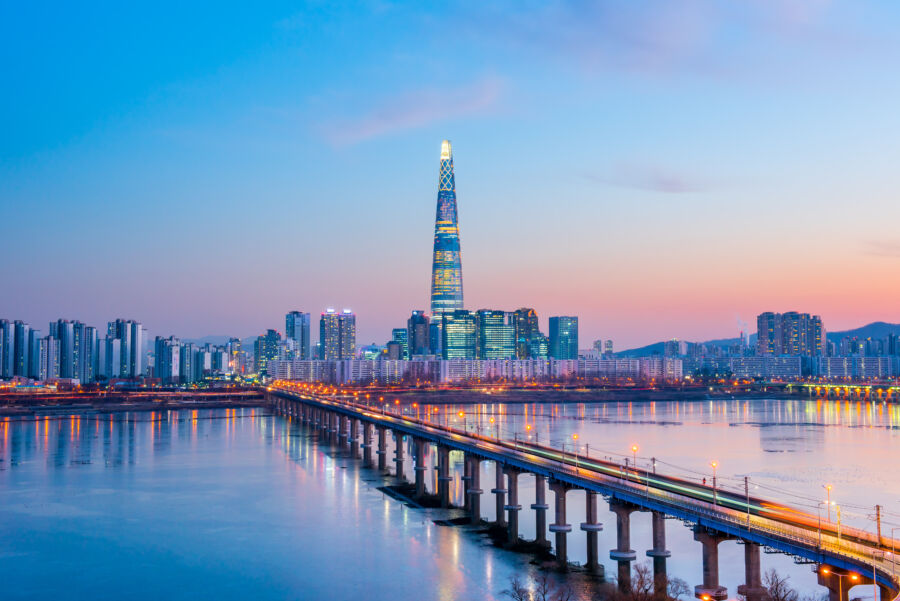
Real travelers share mixed opinions about Seoul and Jeju, with preferences often depending on the Korean experience they seek. Their firsthand accounts reveal the unique character of each destination.
Experiences in Seoul
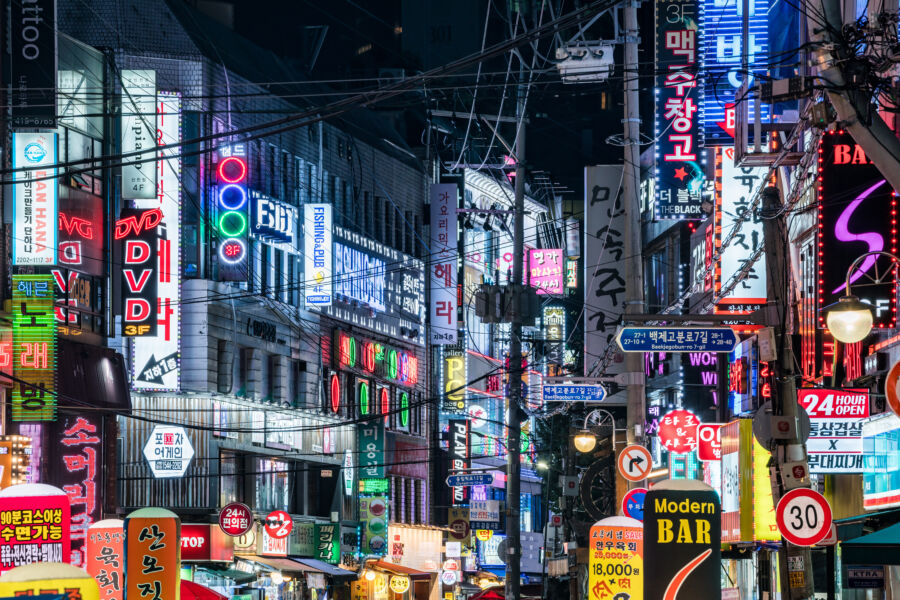
Seoul captivates visitors with its perfect blend of traditional culture and modern attractions. Many travelers rave about wandering through historic hanok villages, where traditional Korean houses offer a glimpse into the past. These preserved neighborhoods create a striking contrast against Seoul’s futuristic skyline.
“I spent hours getting lost in Bukchon Hanok Village,” shares one traveler. “The narrow alleys and traditional architecture made me feel like I’d stepped back in time.”
Shopping enthusiasts often highlight Myeongdong and Dongdaemun markets as must-visit spots. The vibrant street food scene also receives frequent praise, with many mentioning the exciting atmosphere of Gwangjang Market.
Visitors appreciate Seoul’s efficient public transportation, making it easy to explore different neighborhoods. The city’s energy and 24-hour lifestyle surprise many first-time travelers who didn’t expect such a dynamic urban experience.
Adventures in Jeju
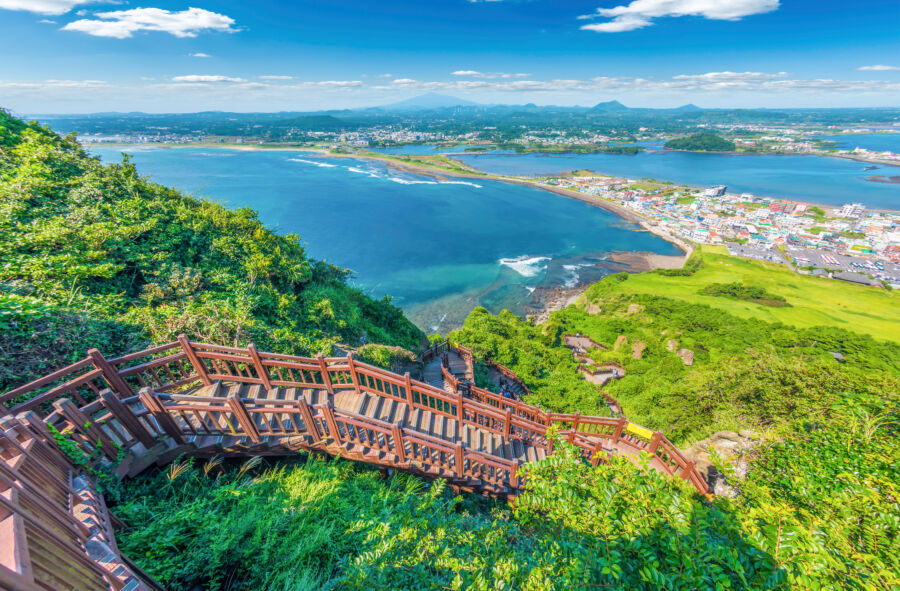
Jeju Island offers a dramatically different Korean experience that nature lovers consistently praise. The volcanic landscapes, black sand beaches, and lush greenery create a paradise for outdoor enthusiasts and photographers alike.
Hiking Hallasan, South Korea’s tallest mountain ranks high on many travelers’ highlight lists. “The view from the top was worth the climb,” one hiker recalls. “You can see the entire island spreading out beneath you.”
Beach lovers often mention Hamdeok and Hyeopjae as their favorite coastal spots. The island’s unique cultural attractions, particularly the Haenyeo Museum, which celebrates Jeju’s famous female divers, also leave lasting impressions.
Many travelers describe feeling a special “vibe” in Jeju that differs completely from mainland Korea. The slower pace and connection to nature provide a welcome contrast to Seoul’s urban energy. Visitors frequently mention renting a car to explore the island’s scattered attractions fully.
See Related: Paris vs Seoul: Surprising Differences Between These Iconic Citiesparis-vs-seoul
Frequently Asked Questions
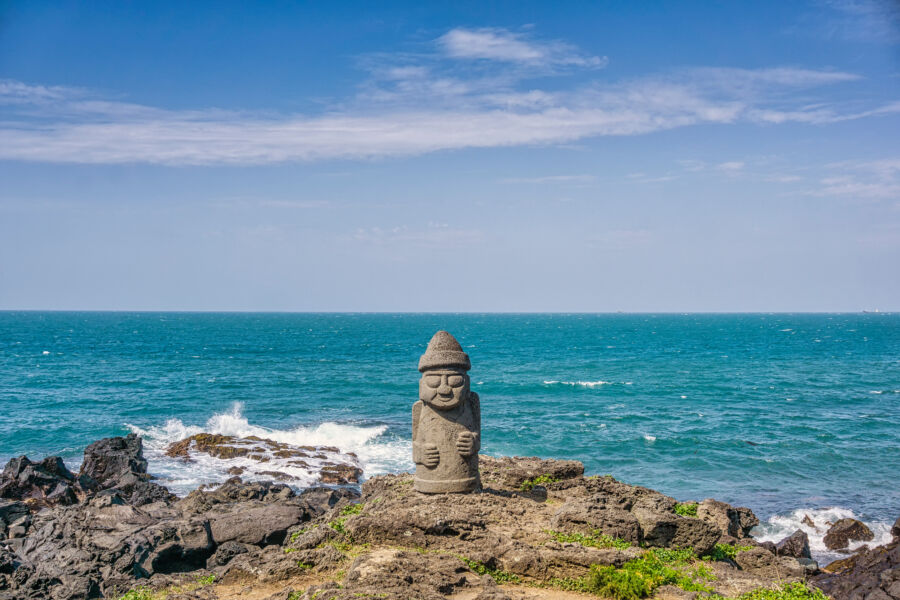
Travelers often need to weigh their options when deciding between Seoul and Jeju for their Korean adventure. Here are answers to common questions that can help you choose the best destination based on your interests.
What are the unique attractions that differentiate Jeju from Seoul?
Seoul offers iconic urban attractions like Gyeongbokgung Palace and Namsan Tower and bustling shopping districts such as Myeongdong and Dongdaemon. The city blends historical sites with modern architecture and entertainment.
Jeju Island, in contrast, showcases natural wonders like the Hallasan volcano, stunning beaches, and unique lava tube caves. The island is famous for its Haenyeo (female free divers), quirky museums like Loveland, and the beautiful Jeju Olle Trail hiking paths.
The island’s UNESCO World Heritage sites include Seongsan Ilchulbong (Sunrise Peak) and Manjanggul Cave, offering experiences you simply can’t find in Seoul.
How do the culinary experiences in Seoul and Jeju compare?
Seoul is a food lover’s paradise, with diverse dining options ranging from street food in Gwangjang Market to high-end Korean BBQ restaurants. The city offers traditional Korean cuisine and international fare from around the world.
Jeju’s food scene centers around fresh seafood caught daily. The island is known for its black pork (from pigs raised on volcanic soil), abalone, and unique dishes like momguk (seaweed soup).
Local specialties in Jeju include tangerine-infused dishes and drinks, as the island is famous for its citrus production. Compared to Seoul’s cosmopolitan food scene, the dining experience tends to be more relaxed and focused on local ingredients.
Can you highlight the contrast in cultural experiences between Seoul and Jeju?
Seoul immerses Korea’s royal history through palaces, museums, and cultural performances. Visitors can experience traditional hanbok dress rentals, K-pop culture, and vibrant nightlife in areas like Hongdae and Itaewon.
Jeju Island offers a glimpse into a distinct island culture developed separately from mainland Korea. The island has its dialect, unique mythological traditions, and stone harubang statues symbolizing protection.
Visitors to Jeju can experience traditional folk villages like Seongeup and learn about the matriarchal influence of the haenyeo diving women. The pace of life and cultural experiences in Jeju tend to be more laid-back and nature-oriented than in the fast-paced Seoul.
What are the differences in climate and natural landscapes between Jeju and Seoul throughout the year?
Seoul experiences four distinct seasons: hot, humid summers and cold, sometimes snowy winters. Spring (March-May) brings cherry blossoms, while fall (September-November) offers spectacular autumn foliage in the city’s parks and surrounding mountains.
Jeju enjoys a milder, subtropical climate with temperatures typically warmer than Seoul year-round. The island rarely sees snow except on Hallasan Mountain. Spring comes earlier to Jeju, with beautiful yellow canola flowers blooming across the island.
The natural landscapes couldn’t be more different – the Han River and surrounding mountains define Seoul. At the same time, Jeju features volcanic formations, waterfalls, lush forests, and coastal cliffs formed by ancient lava flows.
In terms of transportation, what are the options for traveling between Seoul and Jeju?
Flying is the most practical way to travel between Seoul and Jeju, with multiple daily flights from Gimpo and Incheon airports. The flight takes approximately one hour and is often quite affordable due to competition among domestic carriers.
Some travelers consider taking a train to southern port cities like Busan followed by a ferry to Jeju, but this option takes considerably longer (about 12+ hours total) than flying.
Within Seoul, the extensive subway system makes getting around easy, while Jeju typically requires renting a car or using the island’s bus system to explore effectively. Taxis and ride-share services are available in both locations.
What are some insider tips for choosing between a visit to Seoul or Jeju based on travel preferences?
Choose Seoul if you prefer urban excitement, shopping, nightlife, and historical palaces. You can access all these attractions by excellent public transportation. Seoul is perfect for first-time visitors to Korea who want to experience the country’s modern and traditional sides.
Pick Jeju if you love nature, hiking, beaches, and a more relaxed pace. The island is ideal for travelers who want to escape city life and explore outdoor attractions. But be prepared to rent a car for convenience.
For families, Seoul offers kid-friendly attractions like Lotte World and museums. Meanwhile, Jeju provides natural playgrounds and educational experiences about volcanoes and marine life. Budget travelers should note that accommodations in Seoul offer more variety, while Jeju can be pricier during peak seasons.

